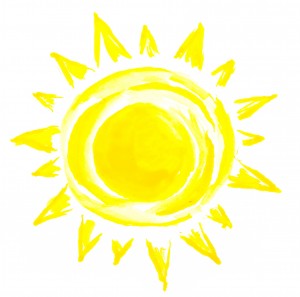Vitamin D: Winter Deficiencies

When it’s cold outside, we generally want to stay inside where the heater will keep us warm, right? Even when we do venture out into the icy weather, very little skin is exposed and the sun rarely shows itself. All of these elements often lead to a vitamin D deficiency.
Why vitamin D?
Vitamin D is an important vitamin because it is associated with the growth and strength of bones. Infants and children who have a deficiency of vitamin D can develop rickets, which is a failure of bones to mineralize. This can lead to increased risk of fractures.
A deficiency of vitamin D in adults can result in osteomalacia, a mineralization defect that softens the bones and affects the amount of calcium absorbed by the bones. The levels of vitamin D influence the absorption of calcium, so the less vitamin D you have in your body, the less calcium is absorbed by your bones.
What are the best sources of vitamin D?
Sunlight is one of the main sources of vitamin D. The glands of your skin secrete a steroid onto the skin surface, which allows some ultraviolet waves of light to be absorbed. This ultraviolet light is then converted to vitamin D. During the summer, receiving adequate amounts of sunlight and vitamin D is much easier, so going to great lengths to include it into your diet is usually not necessary. In the winter, however, when little time is spent in the sunlight, it's important to get your vitamin D through food.
There are many sources of vitamin D that can be incorporated into a healthy diet. Vitamin D is a stable compound, which means it will not be lost when foods are cooked, processed, or stored, so it is very easy to include it in your diet. Some of the best sources include liver, beef, eggs, milk, cheese, salmon, tuna, and sardines. In the United States, certain foods, including milk* and some cereals and breads, are fortified with vitamin D. You can find these fortified foods by checking their nutrition labels.
How much vitamin D do people need?
The amount of vitamin D you need each day depends on your age. According to the National Institute of Health, the Recommended Daily Value (RDA) for infants aged 0-12 months is 400 IU (10 micrograms). For those aged 1 to 69, the RDA increases to 600 IU (15mcg). Adults over 70 years of age should get about 800 IU (20 mcg).
These numbers assume that you are not getting any contact with sunlight and should be decreased when you are more exposed to sunlight. Natural exposure to sunlight will usually give you all the vitamin D that you need. The Tolerable Upper Intake Level (UL) is the maximum amount of a nutrient that you should get each day. Consuming any more than that can cause adverse health effects. However, the UL for vitamin D says that any daily amount is unlikely to cause any negative health effects. The main problem with vitamin D is being deficient, not over-consuming.
*Be sure the milk is fortified with vitamin D. Most store bought milk is.
References
Gropper, S. S., Smith, J. L., & Groff, J. L. (2005). Advanced Nutrition and Human Metabolism; Fourth Edition.
Blemont, California: Wadsworth. Supplements, N. I. (2011, June 24). Vitamin D. Retrieved from http://ods.od.nih.gov/factsheets/VitamnD-HealthProfessional/




Thanks to the guidelines of the wonderful
I want to share with you the subject of a similar
http://1bestway.blogspot.com/2013/11/vitamin-d-foods-top-10-foods-highest-in.html
Leave a comment